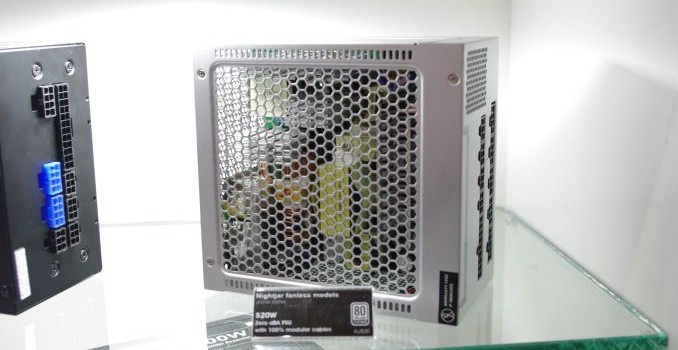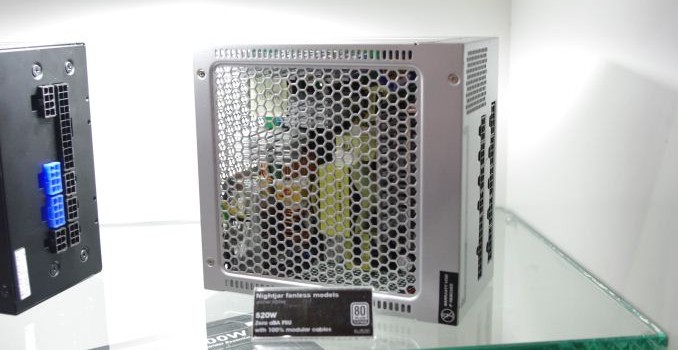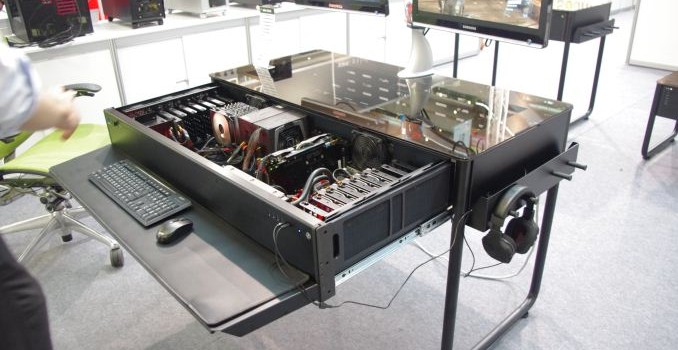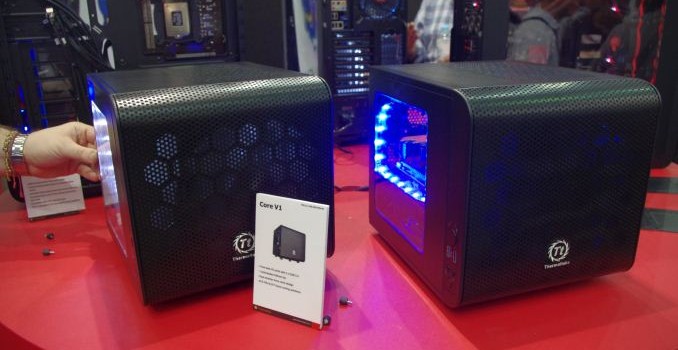
A couple of weeks before Computex, Lian Li pushed forward a press release regarding their new DK-02X chassis that doubles up as a desk. The premise is simple – the desk is as thick as a normal PC, and the central element pulls out like a server would do on rails. The chassis part is made of aluminium, with the top of tempered glass (80kg max load) and the legs are made of iron. This would allow a user to show off their PC inside the desk and not waste space with a separate tower either on the desk or beside it, with enough space on the desk itself to attach three separate monitor mounts and many monitors as much as the budget allows. The desk also has a pull down section for mice and keyboards, along with front facing ODD, USB ports and other front panel amenities.

The DK-02X chassis is the large version, having enough space for two full systems, along with a side part for headsets. Two systems would help professionals who need a compute system, or users who own a low power system for regular work and a high powered gaming system. It also offers the opportunity for two users to work at the same desk on different systems, for example in the home where multiple children/adults need to work simultaneously. The mat seen on the pull out part of the desk above comes with the desk when purchased.

The best way to use this system is with a wireless keyboard and mouse, given the lack of desire to run cables everywhere. My main concern when it was first announced was if the chassis could tip over with a system fully installed. Lian Li confirmed that it can happen if monitors are not mounted to the rear.

There are three points on the rear to mount a monitor stand, perhaps opening up the possibilities for 6+ screen eyefinity with a one-up/one-down configuration from each of the rear ports. Users will have to run cables up the bottom of the chassis as shown here, either individually or to a plug extension. It does seem to make cable management fairly easy if you are able to route all the monitor cables through the rear of the chassis too.

There is copious space for mounting radiators for water cooled systems or many hard drives for something substantial for storage. The right hand side should support up to an E-ATX system while the left hand side will do a mini-ITX. There are a total of eight 120mm fans included in a purchase, and each system can support a CPU cooler up to 175mm in height. VGA and PSU lengths seem not to be much of an issue, but there is a total space for seventeen 3.5-inch disk drives. The total weight of the unladen desk is 45kg, with 1250x805x600mm dimensions.

One of the initial thoughts I had regarding the design was the legs. Lian Li is known for intricate designs, but the legs almost seem like an after-thought with their tubular shape and the feeling of a lack of rigidity. As they are iron rather than aluminium like the rest of the chassis, there is weight to them, and they do look thicker in person, but I have a sense that there was something else that could be done.

Lian Li will also offer a shorter version (in length) of this case for single system users, and the Japanese market will get a version more like a coffee table, only 500mm in height and 700x600mm of desk space.
The main competition for this desk will be from the Red Harbinger Cross Desk, which was probably part of the inspiration for the Lian Li versions. The Cross Desk is substantially more expensive (£1250 in the UK), but most people agree it looks nicer and has plenty of modding opportunities. The Lian Li desks are designed to tap in at a lower price point than the Cross Desk however, with the he full sized DK-02X retailing for $1189, and the shorter DX-01X for $989. Both models should be in the US market by the end of July.




























